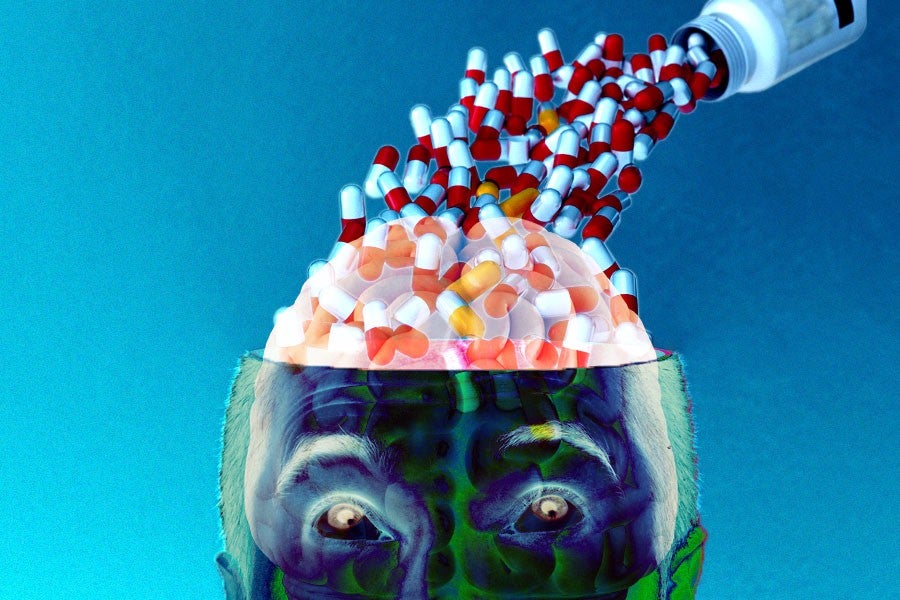Millennials were the first generation of Americans to be habitually prescribed stimulants like Adderall to treat ADHD. They were also the first generation of Americans to habitually abuse these prescribed stimulants as “study drugs” well into high school and college (a 2012 review found that the nonmedical use of these pills represent the second most prevalent form of illicit drug use in college, after weed).
Many of these millennials have since become addicted to Adderall — prescribed or not — and their drug habits are accompanying them into the workplace: The number of American workers who tested positive for amphetamines increased by 44 percent between 2011 and 2015.
This widespread addiction isn’t exactly surprising when you consider how Adderall interacts with the brain. Journalist Casey Schwartz details this process in “Generation Adderall,” a piece for the New York Times Magazine:
Amphetamines unleash dopamine along with norepinephrine, which rush through the brain’s synapses and increase levels of arousal, attention, vigilance and motivation. Dopamine, in fact, tends to feature in every experience that feels especially great, be it having sex or eating chocolate cake. It’s for this reason that dopamine is so heavily implicated in current models of addiction. As a person begins to overuse a substance, the brain — which craves homeostasis and fights for it — tries to compensate for all the extra dopamine by stripping out its own dopamine receptors. With the reduction of dopamine receptors, the person needs more and more of her favored substance to produce the euphoria it once offered her.
The end result is full-blown addiction, akin to a dependence on crystal meth, and attempting to escape its hold will, without a doubt, result in intense withdrawal symptoms. “With Adderall, withdrawal can mimic the symptoms of severe depression, cognitive slowing, low energy and lethargy,” explains Kimberly Dennis, CEO and medical director of SunCloud Health, a private outpatient treatment center. “That’s the exact opposite of what a person taking Adderall to enhance work performance wants.”
In addition to addiction, a 2009 report in Scientific American suggests that long-term Adderall use could change brain function enough to boost depression and anxiety. (Young brains are particularly vulnerable, since they’re not fully developed yet.) In more rare cases, those abusing Adderall for an extended period of time may experience hallucinations, delusions and full-blown psychosis.
The side effects of Adderall have resulted in multiple horrors: In 2011, class president and aspiring medical student Richard Fee hanged himself in his bedroom closet, after struggling for years with an Adderall addiction enabled by careless doctors. More recently, in 2016, Scott Hahn caused a fatal crash on the New Jersey Turnpike after downing 10 Adderall pills. The crash took the lives of a local teacher and his 5-year-old daughter.
Even those lucky enough to escape the drug’s addictive grip are sure to experience bumps along the road. Schwartz, for instance, ended up in the emergency room after experiencing an amphetamine-induced panic attack. “My life was no longer my own,” she writes in her New York Times Magazine piece. “I had long been telling myself that by taking Adderall, I was exerting total control over my fallible self, but in truth, it was the opposite: The Adderall made my life unpredictable, blowing black storm systems over my horizon with no warning at all.”
Despite the very real warning signs — more than 116,000 people were admitted to rehab for an addiction to amphetamines like Adderall in 2012 — there’s still not nearly enough research out there on exactly how extended Adderall use affects the brain. The reason for that, though, is valid: Because millennials were the first generation to be routinely prescribed Adderall, we’ve yet to see what happens to those who rely on the drug when they get old.
This isn’t to say that you should freak out if you briefly experimented with Adderall to crank out a 30-page essay overnight — or to keep the party going. “At small, recreational doses (20 to 40 milligrams), you’ll see some biological changes in the brain and some psychological changes, but they won’t be permanent,” explains Timothy Fong, director of UCLA’s Fellowship in Addiction Psychiatry. “It’s when people take massive amounts — not orally, but by snorting it or mainlining it [for a stronger effect] — that it becomes really neurotoxic.”
Dealing with the problem is far from straightforward, too. “What I can say with certainty is that physicians need better training to prescribe Adderall appropriately, and not simply give it out because a patient says they have ADHD,” says Fong. “We also need to think about whether our regulation of this controlled substance is working. In other words, every workplace has the right to drug test their employees, but do they? No. Should they? That’s unclear.
“Considering the current format, availability and usage patterns among Americans, we also need to ask how much [Adderall] is hurting and helping American society and American quality of life,” Fong continues. “It’s a fascinating question that requires more data.”

